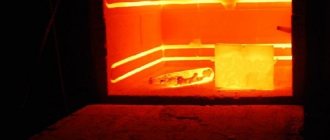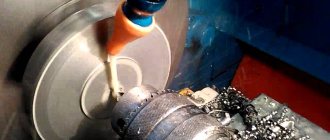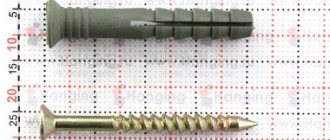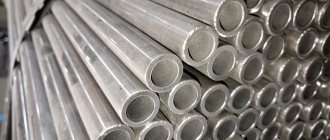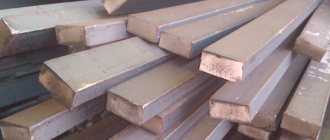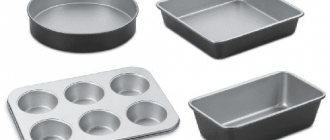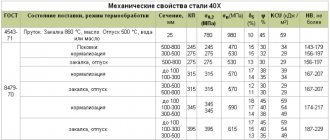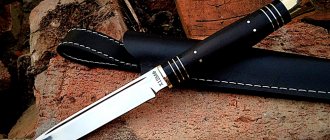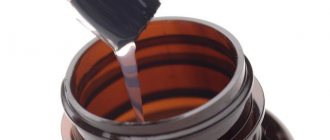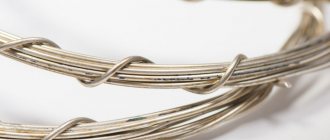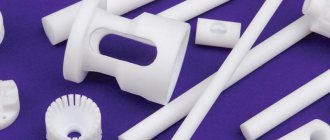There are many parts in mechanical engineering products, the finishing of which, due to the complexity of the geometric shape, is very labor-intensive. In such cases, treatment methods using streams of abrasive particles and special media containing abrasive particles are used.
Processing methods in abrasive media can be divided into several main groups: — Jet abrasive processing (JAT). It is performed due to the impact of abrasive particles carried by a high-speed jet of liquid or gas (air). — Volumetric abrasive processing (VAT), i.e. processing in an environment of chaotically moving abrasive particles. It is based on the interaction of abrasive particles with the surfaces of the part during their relative movement. The movement of abrasive particles is created by the flow of air or liquid, the application of vibrations, centrifugal forces, etc. - Extrusion abrasive processing (EAM). The processing is carried out in a stream of a viscous abrasive suspension pumped through the internal cavities of the parts (extrusion honing) or an auxiliary cavity in which the parts being processed are located (extrusion polishing).
Abrasive blasting
For jet abrasive processing, open and chamber type equipment is used, with varying degrees of automation of the work process.
Open processing requires protective clothing and eye and respiratory protection for the operator, with the exception of automatic processing with robotic arms and dust-free processing devices, where personal protection requirements are kept to a minimum. The advantage of chamber installations is environmental friendliness, but the disadvantage is the limited size of the parts. A typical diagram of a chamber installation is shown in Fig. 1 .
Rice. 1. Diagram of a chamber installation for jet abrasive processing
The abrasive suspension is fed into the working jet apparatus by a pump. At the same time, compressed air is supplied to it. The resulting abrasive jet acts on the surfaces of the workpieces. Moving the part relative to the abrasive jet can be done manually or using special devices to ensure uniform processing. To perform manual processing or change parts in the device, special sleeves and gloves are used. After completion of the abrasive treatment, the parts can be washed using a jet washing apparatus. The following types of abrasives and particles are used for CAO: — Corundum (electrocorundum) is used in preparing surfaces for coating, cleaning surfaces from scale after heat treatment, for finishing treatment to reduce roughness, cleaning workpieces after casting from molding sand particles, removing burrs, rounding sharp edges, removing old metal coatings. The treatment is carried out with abrasive particles of 12...325 microns in size at an air pressure of 0.1...0.6 MPa. Widely used in the processing of medium and high hardness steels. — Silicon carbide is used for the same purposes as electrocorundum. SiC particles have more pronounced and sharp edges. It is advisable to use it when processing parts made of viscous alloys and titanium alloys. — Angular steel particles with a hardness of 40...60 HRC and a size of 10...325 microns. Used for cleaning carbon deposits, removing burrs, old paint, and preparing surfaces for coating. — Steel shot with a hardness of 20...60 HRC, sizes 8...200 microns. It is used to harden the surface layer, remove scale, form residual compressive stresses, and reduce porosity. — Angular particles made of tempered glass with dimensions of 30...400 microns. — Glass beads are used both for cleaning processes and for surface hardening, matting surfaces for decorative purposes, and reducing porosity. — Plastic granules. - Fruit seeds. - Dry ice.
Dry ice blasting allows you to clean parts from carbon deposits and contaminants without the risk of damaging metal surfaces. The treatment is carried out with ice particles fed into a high-speed air stream. Such processing does not require subsequent washing of parts from abrasive particles, as is the case with jet abrasive processing.
It is obvious that the performance and condition of the surface layer after treatment depend on the size ( Table 1 ) and type of abrasive particles, their concentration in the suspension, compressed air pressure, the distance from the nozzle end to the surface being treated, the processing time per unit surface and some other factors, for example , surfactants added to the suspension.
Table 1
| Abrasive grain size, microns | 10 | 20 | 40 | 63 | 100 | 120 | 160 |
| Ra, µm | 0,12…0,2 | 0,16…0,32 | 0,4…0,7 | 0,9…1,1 | 1,3…1,6 | 2,8…4 | 2,8…4,0 |
As the angle of attack increases to 45°, the surface roughness increases and then remains virtually unchanged.
CAO allows you to: — clean surfaces from scale, rust, old paint, coatings, etc.; — reduce surface roughness and give it high decorative properties; — prepare the surface for applying protective and paint coatings; — strengthen the surface layer; — remove burrs and round off sharp edges of parts.
One of the important advantages of SAO is the absence of significant heating of parts during processing.
In the production of gas turbine engines, CAO processes are used, in particular: - to prepare the airfoil surfaces of compressor and turbine blades for the application of erosion-resistant and corrosion-resistant and heat-resistant coatings; — removal of carbon deposits, aluminized layers and old heat-resistant coatings when repairing turbine blades; — polishing turbine blades, diffuser and turbostarter impeller, compressor disk blade; — rounding radii in “Hirt” type connections; — preparing the airfoil surface of compressor blade blanks for rolling.
Volumetric abrasive processing
Volumetric abrasive processing, depending on the nature of the working medium used, is a mechanical or chemical-mechanical process of removing thin layers of material and smoothing out micro-irregularities with particles of the working medium that have an impact effect on the surfaces being treated. In OAO, they strive to provide conditions where particles contact the surface at different angles in different directions. It is also desirable that the intensity of impact and metal removal be uniform over all treated surfaces.
Particles of various shapes and sizes are used as working media in OAO, the material and properties of which are selected depending on the purpose of processing. It is believed that conical particles are most favorable for processing parts with holes, and triangular ones are most suitable for smoothing sharp edges. For complex parts containing various structural elements, the simultaneous use of particles of different shapes is recommended. Heavy and large particles provide greater productivity than light and small particles. When using fine particles, lower surface roughness is achieved. It should be noted that low roughness of the processed surfaces can be achieved by using large particles containing or coated with fine abrasive.
Ceramic particles ( Fig. 2) are recommended for polishing and deburring operations. They are most suitable for machining parts made of difficult-to-machine and hard materials. The particles are made from silicon oxide SiO2 and other minerals (as a binder) and abrasives.
Rice. 2. Ceramic and plastic particles of various shapes
They are molded and sintered at high temperatures, producing porous structures with high hardness. Some ceramic particles of complex shapes (triangle, star, cylinder, ellipse, etc.) are produced by extrusion and cutting to the required size. The density, hardness and structure of the ceramic particles are selected depending on the specific processing conditions.
Currently, OJSCs widely use artificial particles based on plastics filled with abrasives, providing high productivity and quality of processing. Plastic media differ in a wide variety of materials used and particle shapes, type, concentration and size of abrasive grains. These media provide less material removal with a higher quality surface layer. Plastic media are recommended for preparing surfaces for coating, polishing and rounding sharp edges. They are mainly used for processing parts made of relatively soft and medium-hard materials. When used, smooth matte surfaces are obtained. As with ceramic media, various particle shapes are typically used in the embeddings. Synthetic media provide high material removal rates and are highly wear resistant.
For surface hardening, steel shot is used ( Fig. 3 ). When strengthening soft materials, such as aluminum alloys, a medium made of plastic balls has been used.
Rice. 3. Steel particles used for surface hardening
Treatment can be done with dry media or media containing water or oil. Additions of liquids help reduce the temperature and wash out destruction products; in addition, they can provide an increase in processing productivity by reducing or eliminating clogging of medium particles. When using water, corrosion inhibitors are added to it.
For volumetric abrasive processing, the following methods are most widely used: - centrifugal abrasive processing; — disc abrasive treatment; — vibration abrasive treatment; - rotational and planetary-rotational processing - turbo-abrasive processing (in a pseudo-boiling environment). These methods differ in the way they ensure the movement of particles of the working medium.
Features and scope of application of OJSC are given in table. 2 .
table 2
| Method | Principle of operation | Advantages | Flaws | Scope of application |
| Disc centrifuge | A rotating disk swirls the working medium in a special chamber; particles of the environment bombard the surfaces of parts. | Simplicity of automation, wide range of used environments, high productivity. | Potential danger of parts colliding with each other, some restrictions in the working environment used, thin-walled parts less than 0.3 mm thick cannot be processed, large, heavy parts cannot be processed. | Small parts for which collisions during processing are unlikely or allowed by technical requirements, small stampings and castings. |
| Drum centrifuge | Closed drums with loaded parts and working medium rotate around their axes and relative to the central shaft with the same frequencies. | Highly flexible, can be used for both rough deburring and fine finishing operations. The use of special devices allows you to eliminate contacts of the parts being processed. | Labor-intensive loading and unloading of parts, difficulty in controlling the process, and difficult automation. Large, heavy parts cannot be processed. | Small and medium-sized parts that require deburring, castings, stampings that require uniform removal of material from surfaces with relatively low roughness requirements. |
| Vibration abrasive treatment | The parts are placed in a vibrating container with an abrasive medium. | Loading and unloading of parts is simplified, a wide range of applications from deburring to polishing. | Large, heavy parts cannot be processed. | Small and medium-sized parts, castings, stampings. |
| Rotational method | Parts placed on spindles rotate in the working environment. | There is no contact of parts between themselves and the walls of the housing, extremely low surface roughness is achieved, and individual surfaces of complex-shaped parts can be selectively processed. | Special devices are required for fastening parts. | Parts of medium size and complex shape that require finishing or hardening processing, casting, stamping. |
| Planetary rotation method | Parts placed on spindles rotate in a working environment located in a rotating cuvette. | There is no contact between the parts and the walls of the housing, low surface roughness is achieved, and it is possible to selectively process individual surfaces of parts with complex shapes. | Special devices are required for fastening parts. | Medium and large parts requiring finishing or strengthening treatment. |
| Turbo abrasive method | Rotating parts are exposed to an abrasive fluidized environment. | Low roughness is achieved, residual compressive stresses are induced, and processing of parts with hard-to-reach surfaces is possible. | Special devices are required for fastening parts. | Medium and large parts requiring finishing hardening treatment (compressor disks, unicycles, etc.). |
During centrifugal abrasive processing, the movement of medium particles is achieved by the action of centrifugal forces. The operating principle of a drum centrifuge is shown in Fig. 4 . Drums are installed on a rotating crosspiece, filled with an abrasive medium and workpieces. When the cross rotates, the reels rotate simultaneously at the same frequency, but in the opposite direction. Sometimes reversing the direction of rotation is used. In the last decade, this method has been widely used for deburring and polishing a wide range of parts. The process is controlled by regulating the rotation speed, changing the composition of the abrasive medium and the degree of filling of the drums with the abrasive medium and parts. The ratio of volumes of medium and parts is selected based on considerations of reducing the likelihood of contact of adjacent parts during processing, which can lead to scratching. At small values of this ratio, for example 1:1, the probability of contact between parts is higher; in addition, the conditions for the movement of medium particles, especially large ones, worsen. The optimal ratio between the volumes of the medium and the parts is 3:1...4:1.
Rice. 4. Scheme of centrifugal abrasive processing and installation for centrifugal abrasive processing
The operation of a disk centrifuge ( Fig. 5 ) is based on mixing an abrasive medium with a rotating disk relative to a stationary body. To avoid scratching the parts, the surfaces of the disk and housing walls are coated with polyurethane. When the disk rotates, the abrasive medium swirls. The so-called tornado effect occurs, increasing the penetrating ability of the abrasive medium, which makes it possible to process hard-to-reach areas of the surfaces of parts.
Rice. 5. Installation diagram for disc abrasive processing (a), Otec disc type installation (b) and tornado effect (c)
One of the promising schemes is vibration abrasive processing ( Fig. 6 ). During processing, the working chamber performs harmonic (or close to it) oscillations, and its points move along trajectories in the form of a circle or ellipse. The oscillation frequency is 15...50 Hz with amplitudes of 0.5...9 mm.
Rice. 6. Installation for vibroabrasive processing
Vibration of the working chamber along a circular or elliptical trajectory with the corresponding shape of the bottom of the working chamber causes circulation movement of the working medium and vibrations of its individual particles. During vibration, the parts move along with the medium in a spiral from the loading to the unloading position. Parts are launched for processing one by one, which eliminates their contact with each other. Some vibratory abrasive machining units have multiple spiral channels, which allows simultaneous machining in different working environments. Under the influence of vibrations, variable particle accelerations arise, which have a dynamic effect on the surface in the form of many micro-impacts. The effect of vibration transmitted to the working environment and the workpieces is most pronounced at the walls of the working chamber and is damped as it moves away from them.
Planetary rotation method. The parts placed on spindles rotate in a working medium located in a rotating cuvette ( Fig. 7, 8 ). Its main advantage is the ability to process relatively large parts.
Rice. 7. Installation diagram for planetary-rotational waterjet processing: 1 - workpiece; 2 - hydraulic cylinder; 3 - rod; 4 — spindle unit; 5 - supply of water with chemical components; 6 - abrasive medium; 7 - cuvette; 8 — control panel; 9 — cuvette rotation drive
Rice. 8. Installations for planetary-rotary processing
In Fig. Figure 9 shows parts polished using this method.
Rice. 9. GTE parts, polished by planetary-rotational processing
Turbo abrasive processing (TAO) was invented in Russia. Processing is carried out using dry working media. Medium particles of the same size or weight are used. The size and type of particles are selected depending on the required surface roughness. The basic TAO diagram is shown in Fig. 10 . TAO is based on the use of a fluidized working environment in which the workpiece rotates. Fluidization is an operation in which solid particles are brought into a liquid-like state by contact with a gas or liquid. In TAO, fluidization is performed by an air flow in a special chamber. The size of abrasive particles is usually 300...600 microns.
Rice. 10. Basic scheme of TAO, TF-522 installation for turbo-abrasive processing and turbine disk after TAO: 1 - workpiece; 2 - air flow; 3 - abrasive medium
The critical value of the air flow velocity υвп кр, necessary for suspending spherical particles, can be estimated by the following formula: υвп кр = (Reкр vв) / d, where Reкр is the critical value of the Reynolds criterion necessary for suspending the medium; vв is the kinematic viscosity of air; d is the average particle size.
The critical value of the Reynolds criterion is calculated by the formula: Recr = Ar / (1400 + 5.22 Ar),
where Ar is the Archimedes criterion Ar = ( (g d3 / vв ) / ( (ρach ρв ) / ρв); here g is the acceleration of free fall; ρach, ρв are the densities of abrasive particles and air, respectively.
The air flow increases the volume occupied by abrasive particles, which begin to impulsively move mainly in the vertical direction. Particles raised by the air flow rotate and, as a result, move in the direction perpendicular to the air flow, under the influence of the so-called Magnus transversion forces Fm:
Fm = “pi”ρв d3ωV,
where ω is the angular velocity of the abrasive particle; V = Vв / ε; ε is the volume between abrasive particles, which is one of the main characteristics of a fluidized medium. ε = 1 – “tau”, where “tau” is the volumetric concentration of solid particles in a fluidized medium.
For a fluidized medium 0.35 < "tau" < 0.6; 0.4 < ε < 0.7.
Transversion forces and collisions of particles are the source of their chaotic movement in a fluidized medium. Suspended abrasive particles penetrate hard-to-reach areas of parts, which improves the finishing process. The rotation speed of the part in a fluidized medium is 20…30 m/min. The number of impacts of abrasive particles per 1 square millimeter of surface per second reaches 200...500. TAO has one of the highest material removal rates among finishing equipment. When processing steels and titanium alloys, it is 2...5 µm/min. Depending on the material, dimensions of the part, technological conditions and grain size of the abrasive medium, the processing time is 3...20 minutes.
The surface roughness after turbo-abrasive treatment depends on the grain size ( Table 3 ) and the type of abrasive.
When processing nickel and titanium alloys, it decreases by 30...50% Table 3
| Abrasive particle size, microns | Surface roughness, Ra, µm |
| 500 | 0,6…1,0 |
| 400 | 0,4…0,6 |
| 300 | 0,2…0,3 |
This technology has several significant advantages over other abrasive finishing methods. The main ones are: - low energy costs; — short processing time; — simplicity and minimal requirements for the process; — a combination of a high rate of material removal with an improvement in the physical and mechanical properties of the surface layer (formation of residual compressive stresses, low roughness).
TAO is used for finishing parts such as turbine and compressor disks, turbine and compressor blades, gears, monowheels and impellers.
Application of abrasives
Abrasives extremely quickly found wide application in various industries, mainly in mechanical engineering. Their consumption has especially increased due to the transition to mass production of standard replacement parts that require great precision. The main consumers are the auto, aircraft, machine tool and locomotive industries, and construction.
The processes of “finishing” and “grinding”, widespread in modern technology, are carried out by using the finest abrasive powders, which smooth out all the irregularities from the surface being treated. Abrasives play a significant role when sharpening various tools.
The processing of optical glasses, mirrors and other types of glass is extremely important. The woodworking and leather industries widely use abrasive sandpaper to smooth out uneven surfaces and give wood and leather a smooth surface. The paper industry uses abrasives in the production of wood pulp; The tool used to split the wood is a defiber stone. Millstones, which grind grains of bread into flour, are also a type of abrasive product.
